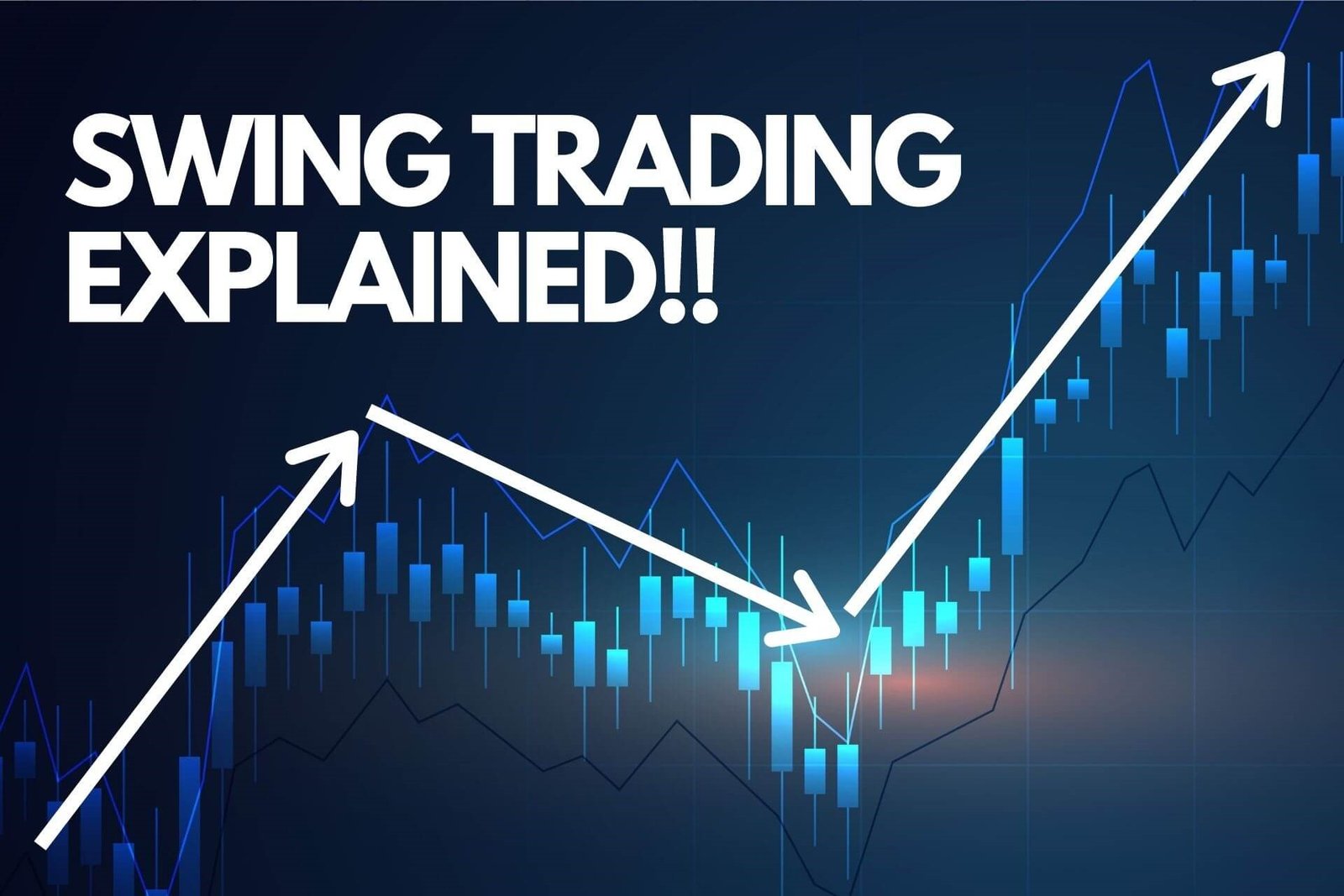7 Proven Forex Trading Strategies That Work in 2025 A Complete Expert Guide

The foreign exchange market processes over $7.5 trillion in daily transactions, making it the world’s most liquid financial market. However, success in forex trading isn’t about luck—it’s about implementing forex trading strategies that work consistently over time. Whether you’re a complete beginner or an experienced trader looking to refine your approach, understanding proven strategies can make the difference between profitable trading and costly mistakes.
In this comprehensive guide, we’ll explore seven battle-tested forex trading strategies that work across different market conditions. These strategies have been refined by professional traders and backed by years of market data. From scalping techniques that capitalize on minute price movements to swing trading approaches that capture larger market trends, you’ll discover actionable methods to enhance your trading performance.
The key to successful forex trading lies not in finding a “holy grail” strategy, but in understanding multiple approaches and knowing when to apply each one. By the end of this article, you’ll have a complete toolkit of forex trading strategies that work, along with the knowledge to implement them effectively in your own trading journey.
Understanding the Foundation of Successful Forex Trading Strategies That Work
Before diving into specific strategies, it’s crucial to understand what makes certain forex trading approaches more effective than others. Successful strategies share common characteristics that separate them from ineffective methods.
Risk Management as the Cornerstone
Every profitable forex strategy begins with solid risk management principles. Professional traders never risk more than 1-2% of their account balance on a single trade, regardless of how confident they feel about a particular setup. This approach ensures that even a series of losing trades won’t devastate your trading capital. Position sizing becomes critical when implementing any strategy. Calculate your position size based on your stop-loss distance and risk tolerance, not on how much profit you hope to make. This mathematical approach removes emotion from your trading decisions and protects your capital during inevitable losing streaks.
Market Analysis Fundamentals
Effective forex strategies combine both technical and fundamental analysis. Technical analysis helps identify entry and exit points, while fundamental analysis provides context about broader market trends and potential catalysts for currency movements.
Economic indicators such as GDP growth, inflation rates, and employment data significantly impact currency values. Understanding these relationships allows you to align your trading strategies with broader economic trends, increasing your probability of success. Central bank policies and interest rate decisions create some of the most powerful forex moves. Strategies that incorporate these fundamental factors tend to produce more consistent results than purely technical approaches.
Scalping Strategies for Quick Profits
Scalping represents one of the most popular forex trading strategies that work for traders seeking quick profits from small price movements. This high-frequency approach requires discipline, fast execution, and strict risk management.
The 1-Minute Scalping Strategy
This strategy focuses on capturing 5-10 pip movements using 1-minute charts. Traders look for clear support and resistance levels, entering trades when price breaks these levels with strong momentum. The key is to exit quickly, either when you hit your profit target or when momentum stalls. Entry signals include strong candlestick patterns like engulfing candles or doji formations at key levels. Set your stop-loss 3-5 pips below your entry and target 5-8 pips profit. This risk-reward ratio may seem unfavorable, but the high win rate compensates for smaller individual gains.
Moving Average Crossover Scalping
Using fast-moving averages (5 EMA and 10 EMA) on short timeframes provides clear entry signals for scalping strategies. When the 5 EMA crosses above the 10 EMA, look for long positions. When it crosses below, consider short positions. Combine this technique with RSI indicators to avoid entering trades when the market is overbought or oversold. Wait for RSI readings between 30-70 for optimal entry conditions.
Swing Trading Approaches for Medium-Term Gains

Swing trading strategies capture larger price movements over several days to weeks, making them ideal for traders who can’t monitor charts constantly throughout the day.
Support and Resistance Swing Strategy
This approach identifies key support and resistance levels on daily charts, then waits for price to test these levels before entering trades. When price approaches a strong support level and shows signs of bouncing (such as bullish engulfing patterns), enter long positions targeting the next resistance level. The beauty of this strategy lies in its clear risk-reward ratios. Your stop-loss sits just below the support level, while your profit target aims for the next significant resistance level, often providing 2:1 or 3:1 risk-reward ratios.
Trend Following with Moving Averages
Use the 50-day and 200-day moving averages to identify long-term trends, then enter trades in the direction of the trend using smaller timeframes for precise entry points. This strategy works particularly well during strong trending markets. When the 50-day MA is above the 200-day MA, focus on long trades. When below, look for short opportunities. Use pullbacks to the moving averages as entry points, with stops placed beyond the recent swing high or low.
Day Trading Techniques for Active Traders
Day trading strategies require more time commitment but offer excellent profit potential for dedicated traders willing to spend several hours daily analyzing markets.
Breakout Trading Strategy
Monitor consolidation patterns on 15-minute or 30-minute charts, then trade the breakout when price moves beyond the pattern’s boundaries. Successful breakouts often lead to significant moves, especially when accompanied by increased volume. Look for patterns like triangles, rectangles, or flag formations. Enter trades when price breaks the pattern with strong momentum, setting stops just inside the pattern and targeting a distance equal to the pattern’s height.
London Session Opening Strategy
The London trading session creates significant volatility as European markets open and overlap with Asian session closings. This strategy capitalizes on the increased activity during the first hour of London trading. Identify the high and low from the Asian session, then trade breakouts from this range during London’s opening hour. The increased liquidity often leads to strong directional moves that can be highly profitable.
Advanced Strategies for Experienced Traders
Multiple Timeframe Analysis
This approach uses three different timeframes to analyze trades: a long-term chart for trend direction, a medium-term chart for setup identification, and a short-term chart for precise entry timing. For example, use daily charts to identify the overall trend, 4-hour charts to spot potential reversal or continuation patterns, and 15-minute charts for entry signals. This comprehensive analysis significantly improves trade quality and success rates.
Carry Trade Strategy
Carry trades involve buying currencies with high interest rates while selling those with low rates, profiting from the interest rate differential. This strategy works best during stable market conditions when currency pairs trend steadily. Research central bank policies and interest rate differentials before implementing carry trades. Popular carry trade pairs include AUD/JPY, NZD/JPY, and EUR/JPY, though these relationships change as monetary policies evolve.
Currency Pair Selection and Market Timing
Choosing the right currency pairs and trading times significantly impacts strategy effectiveness. Different pairs behave differently, and understanding these characteristics helps optimize your trading approach.
Major vs. Minor Currency Pairs
Major pairs like EUR/USD, GBP/USD, and USD/JPY typically offer the tightest spreads and highest liquidity, making them ideal for most strategies. These pairs also tend to follow technical analysis more reliably than exotic pairs. Minor pairs and crosses can offer excellent opportunities but require more careful analysis due to wider spreads and lower liquidity. Strategies that work well with majors may need adjustments for minor pairs.
Session-Based Trading
Different trading sessions create unique market characteristics. The Asian session often sees range-bound trading, making it ideal for scalping strategies. The London session brings increased volatility and breakout opportunities. The New York session can produce strong trending moves, especially during the first few hours. Align your strategy choice with session characteristics for better results. Scalping works well during quiet Asian sessions, while breakout strategies excel during volatile London and New York sessions.
Also Read: Best Markets to Trade Online Complete 2025 Guide for Beginners
Psychology and Discipline in Strategy Implementation
Even the best forex trading strategies that work will fail without proper psychological discipline and emotional control.
Developing Trading Discipline
Successful traders follow their strategies mechanically, regardless of emotions or recent trading results. Create detailed trading rules for each strategy, including specific entry criteria, exit rules, and position sizing guidelines. Keep a trading journal documenting every trade, including your reasoning for entering, market conditions, and lessons learned. This practice helps identify patterns in your trading behavior and areas for improvement.
Managing Trading Emotions
Fear and greed represent the biggest obstacles to successful strategy implementation. Fear causes traders to exit winning trades too early or avoid taking valid setups. Greed leads to oversized positions or holding losing trades too long. Develop pre-defined rules for every aspect of your trading, then follow them regardless of emotions. Use position sizing that allows you to sleep comfortably at night, even if trades move against you temporarily.
Technology and Tools for Strategy Enhancement
Modern forex trading benefits significantly from technological tools that can enhance strategy performance and execution quality.
Trading Platform Features
Choose platforms that offer advanced charting capabilities, customizable indicators, and reliable order execution. Features like one-click trading, trailing stops, and economic calendar integration can significantly improve your strategy implementation. Consider platforms that support automated trading if you want to implement systematic strategies without manual intervention. However, always thoroughly backtest automated systems before risking real money.
Market Analysis Tools
Economic calendars help anticipate high-impact news events that could affect your strategies. Sentiment indicators provide insights into market positioning and potential reversal points. Correlation analysis tools help understand relationships between different currency pairs, allowing for better portfolio management and risk control across multiple positions.
Common Mistakes That Undermine Trading Strategies
Understanding common pitfalls helps traders avoid expensive mistakes that can derail even the best strategies.
Overcomplicating Simple Strategies
Many traders add unnecessary indicators or rules to proven strategies, thinking complexity equals profitability. In reality, simple strategies often outperform complex ones because they’re easier to execute consistently. Stick to strategies with clear, objective rules that can be followed without interpretation. If you find yourself constantly adjusting rules or adding exceptions, you’re likely overcomplicating your approach.
Inadequate Backtesting
Before implementing any strategy with real money, thoroughly backtest it using historical data. This process reveals potential weaknesses and helps set realistic expectations for future performance. Use at least several years of historical data for backtesting, including different market conditions. Forward testing on demo accounts provides additional validation before risking real capital.
FAQs
Q: What are the most profitable forex trading strategies that work for beginners?
A: Beginners should start with simple trend-following strategies using moving averages or support/resistance levels. These approaches are easier to understand and implement consistently while building trading experience.
Q: How much capital do I need to implement effective forex trading strategies?
A: You can start with as little as $100-500, but $1,000-5,000 provides more flexibility for proper risk management. The key is using appropriate position sizes rather than having a large account balance.
Q: Can automated trading systems effectively implement forex trading strategies that work?
A: Yes, but only if the underlying strategy has been thoroughly tested and proven profitable. Automated systems excel at removing emotions but can’t adapt to changing market conditions like human traders.
Q: How long does it take to see consistent results from forex trading strategies?
A: Most traders need 6-12 months of consistent practice to see reliable results. This timeline includes learning the strategy, developing discipline, and adapting to different market conditions.
Q: Should I use multiple forex trading strategies simultaneously?
A: It’s better to master one strategy thoroughly before adding others. Using multiple strategies can lead to confusion and inconsistent execution, especially for newer traders.
Conclusion
Success in forex trading comes from consistently applying proven strategies rather than searching for the perfect system. The forex trading strategies that work outlined in this guide have helped thousands of traders achieve profitability, but their effectiveness depends entirely on your implementation and discipline.
Start by choosing one strategy that matches your available time, risk tolerance, and personality. Practice it thoroughly on a demo account until you can execute it flawlessly, then gradually transition to live trading with small position sizes.





